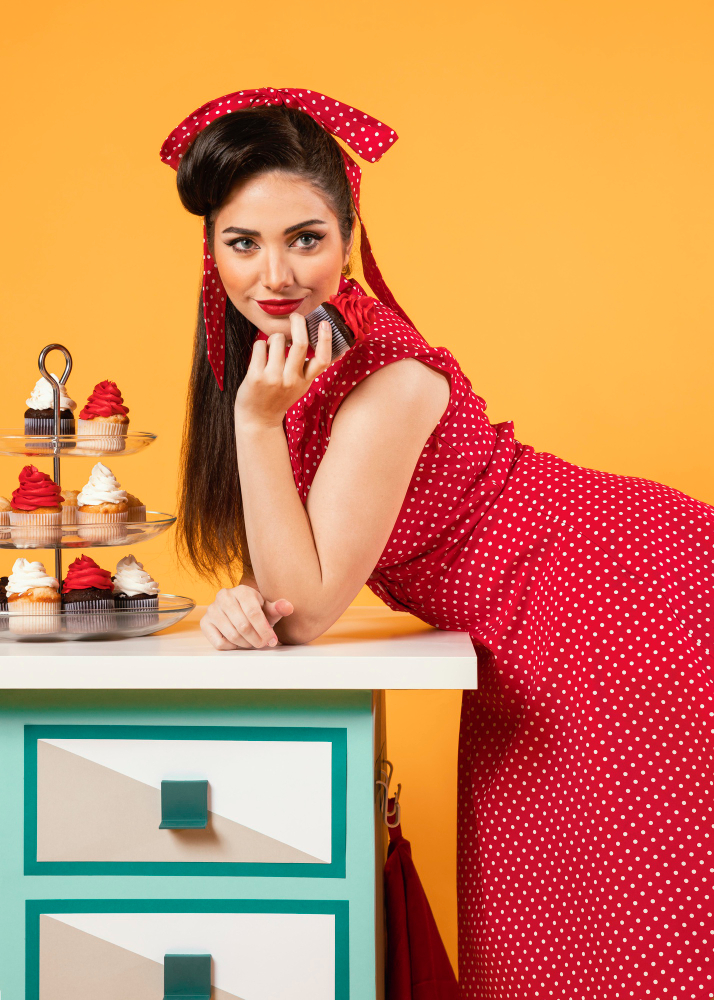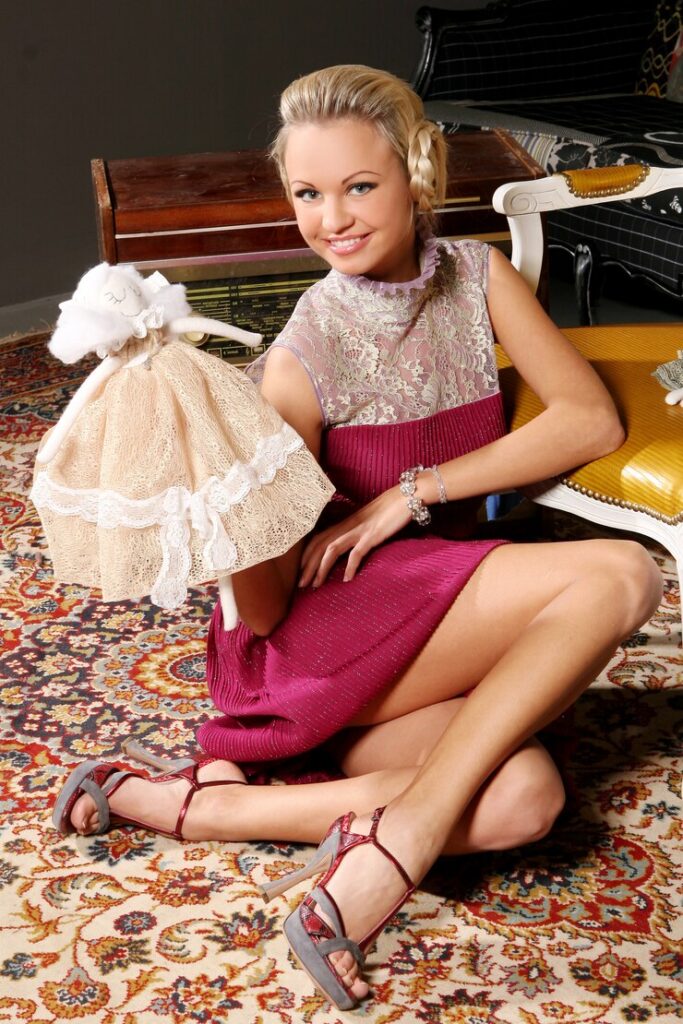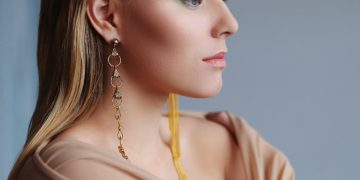Table of Contents
Introduction
In the ever-evolving world of fashion, trends come and go, but some styles stand the test of time. One such enduring trend is vintage dress fashion, which has seen a remarkable resurgence in recent years. From the iconic silhouettes of the 1920s to the bold prints of the 1970s, vintage fashion continues to captivate style enthusiasts across the UK. But what is it about vintage dress fashion that keeps it perpetually in vogue? Let’s delve into the charm, versatility, and sustainability of this timeless trend.
The Allure of Vintage Dress Fashion
Vintage dress fashion is not just about wearing old clothes; it’s about embracing a piece of history, a nod to the past that tells a story. Each era of fashion brings with it unique styles that reflect the social, cultural, and economic conditions of the time. The allure of vintage lies in its ability to offer something different from the fast fashion of today. It provides a sense of individuality, allowing people to express their personality through clothing that stands out from the crowd.
1. Timeless Elegance and Unique Styles
Vintage dresses are synonymous with elegance and sophistication. Whether it’s the flapper dresses of the 1920s, the cinched waists of the 1950s, or the bohemian styles of the 1970s, each decade has left its mark on fashion. These pieces are not just garments; they are a reflection of the aesthetics and values of their time.
For instance, the 1950s were known for their feminine silhouettes, featuring full skirts and nipped-in waists, a stark contrast to the androgynous styles of the 1920s. Wearing a vintage dress allows you to capture the essence of these bygone eras, giving you a look that is both classic and distinctive.
2. The Sustainability Factor
In an age where fast fashion is increasingly criticized for its environmental impact, vintage dress fashion offers a sustainable alternative. By choosing to wear vintage, you’re not only making a style statement but also contributing to a more sustainable fashion industry. Vintage shopping promotes the reuse and recycling of clothing, reducing the demand for new garments and the resources required to produce them.
Moreover, vintage dresses are often made from higher quality materials and crafted with care, meaning they are more durable and can last for many years. This contrasts sharply with the disposable nature of much of today’s fashion, where clothes are often worn only a few times before being discarded.
3. The Influence of British Icons
British icons have played a significant role in popularizing vintage fashion. Figures like Audrey Hepburn, Twiggy, and Princess Diana have all contributed to the enduring appeal of certain vintage styles. Audrey Hepburn’s little black dress in Breakfast at Tiffany’s remains a timeless piece, while Twiggy’s mod look from the 1960s continues to inspire fashionistas.
The late Princess Diana’s style is another example of vintage fashion’s lasting influence. Her preference for bold colors, statement pieces, and elegant silhouettes has made her a fashion icon, with many of her outfits being emulated and referenced in modern fashion.

4. Vintage Dress Fashion in Contemporary Culture
Today, vintage dress fashion is not just for the nostalgic; it has been embraced by younger generations who are drawn to its uniqueness and sustainability. Celebrities like Alexa Chung and Florence Welch have been spotted in vintage pieces, further fueling the trend.
The rise of social media has also played a crucial role in the popularity of vintage fashion. Platforms like Instagram and Pinterest are filled with influencers showcasing how they incorporate vintage pieces into their modern wardrobes. This has made vintage fashion more accessible and appealing to a wider audience, particularly in the UK, where the vintage scene is thriving.
5. Start Small
If you’re new to vintage fashion, start by incorporating small pieces into your wardrobe. Accessories like scarves, bags, and jewelry are a great way to dip your toes into the vintage waters without fully committing to a vintage dress. These items can add a touch of retro charm to any outfit.
6. Mix Vintage with Modern
One of the best ways to wear vintage is to mix it with modern pieces. Pairing a vintage dress with contemporary shoes or accessories can create a balanced look that feels both fresh and timeless. This approach allows you to enjoy the best of both worlds: the elegance of vintage and the practicality of modern fashion.
7. Tailoring Is Key
Vintage clothing often comes with unique sizing and fits that may not align with modern standards. Investing in tailoring can make a world of difference, ensuring that your vintage dress fits you perfectly and enhances your figure. Tailoring allows you to make the garment truly yours, adding to its uniqueness.
8. Care for Your Vintage Pieces
Vintage dresses require special care to ensure they last for years to come. Always check the care label (if it has one), and consider hand washing or dry cleaning delicate items. Store your vintage clothing properly, away from direct sunlight and in a cool, dry place to prevent damage.
9. London’s Vintage Hotspots
London is a haven for vintage lovers, with areas like Brick Lane, Camden Market, and Portobello Road offering a wide range of vintage clothing. From high-end boutiques to affordable thrift stores, London has something for every vintage enthusiast.
10. Manchester’s Northern Quarter
Manchester’s Northern Quarter is another top destination for vintage shopping. Known for its creative and independent spirit, this area is filled with quirky vintage shops that cater to all tastes and budgets. Whether you’re looking for a 1920s flapper dress or a 1980s power suit, you’ll find it here.
11. Edinburgh’s Grassmarket
Edinburgh’s Grassmarket is a must-visit for vintage fashion lovers. The historic streets are lined with vintage shops offering everything from Victorian gowns to 1970s maxi dresses. The area also hosts regular vintage fairs, where you can discover unique pieces from different eras.

12. The Role of Technology in Vintage Fashion
Technology is playing an increasingly important role in making vintage fashion more accessible to a global audience. Online platforms, social media, and apps have revolutionized the way we shop for and discover vintage clothing. Websites like Etsy, eBay, and Depop have become go-to destinations for vintage enthusiasts, offering a vast array of garments from different eras at the click of a button.
Additionally, the rise of virtual try-on technology and AI-powered fashion recommendations is making it easier for consumers to find vintage pieces that suit their style and body type. This integration of technology with vintage fashion is helping to keep the trend alive and relevant in a digital age.
13. The Cultural Impact of Vintage Dress Fashion
Vintage dress fashion is more than just a style choice; it’s a cultural phenomenon that reflects broader societal shifts. The resurgence of vintage fashion can be seen as part of a wider movement towards appreciating craftsmanship, individuality, and sustainability. In a world dominated by fast fashion and mass production, vintage clothing offers a counter-narrative that celebrates the unique and the enduring.
Moreover, vintage fashion allows individuals to connect with the past in a meaningful way. Whether it’s wearing a dress that once belonged to a previous generation or emulating the style of a bygone era, vintage fashion offers a tangible link to history. This connection to the past can be both comforting and empowering, providing a sense of continuity in an ever-changing world.
Conclusion
Vintage dress fashion is a timeless trend that continues to captivate and inspire. Whether you’re drawn to the elegance of the 1950s, the boldness of the 1970s, or the sustainability of wearing pre-loved clothing, vintage fashion offers something for everyone. In the UK, the vintage scene is vibrant and diverse, with countless opportunities to discover unique pieces that reflect your personal style.
As we look to the future, it’s clear that vintage fashion will continue to play a significant role in the fashion landscape. With its blend of history, sustainability, and individuality, vintage dress fashion is not just a trend – it’s a way of life.
For more insights and the latest stories in fashion, be sure to explore Glamour Script, where we keep you updated on the trends and cultural movements shaping the world of style.
FAQS
Q1: What defines a dress as “vintage”?
A1: A dress is generally considered vintage if it was made at least 20 years ago. However, some fashion experts and enthusiasts may define vintage as clothing from specific eras, such as the 1920s to the 1980s.
Q2: How can I tell if a vintage dress is authentic?
A2: Look for signs like original labels, the type of fabric, and construction details. Authentic vintage dresses often have unique features like metal zippers or hand-sewn elements. Researching the brand or designer can also provide clues to its authenticity.
Q3: Why is vintage dress fashion so popular?
A3: Vintage dress fashion is popular because it offers a unique, sustainable alternative to modern fashion. It allows individuals to express their personality through clothing that has a history and is often of higher quality than contemporary mass-produced garments.
Q4: Can I wear vintage dresses to modern events?
A4: Absolutely! Vintage dresses can be worn to a variety of modern events, from weddings to parties. Pairing vintage pieces with modern accessories can create a stylish and unique look that stands out.
Q5: Where can I find affordable vintage dresses in the UK?
A5: Affordable vintage dresses can be found at charity shops, thrift stores, and vintage markets across the UK. Online platforms like Depop, eBay, and Etsy also offer a wide range of vintage clothing at various price points.

















































